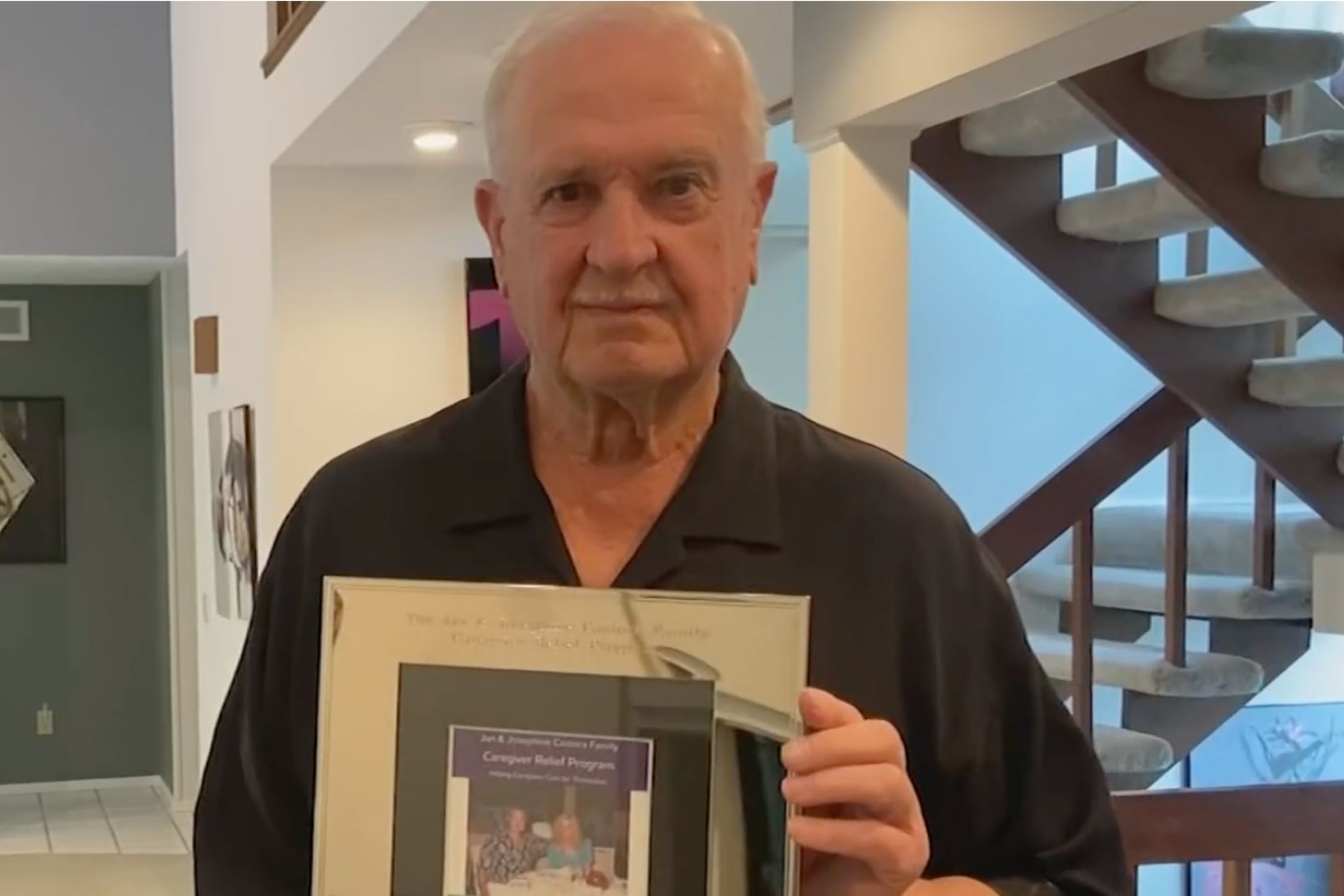
When Josephine was diagnosed with Alzheimer’s disease in 2009, her husband of 62 years, Jan, stepped in to become her carer.
The experiences he had in that role, and the stories he heard from the carers who came in to support him, have now led him to develop a foundation to help unpaid carers take ‘time out’ to recharge their batteries from the daily rigours of caring.
Jan and Josephine Castora, known to their friends as Jan and Joe, were happily married for 62 years.
They married when they were both teenagers, had three children and several grandchildren.
In 2009, Josephine was diagnosed with aphasia frontotemporal dementia and Jan became her full-time carer.
“I would get her up in the morning. I would change her, she was incontinent. I would brush her teeth and comb her hair and exercise her and feed her,” Jan explained to Spectrum News.
Jan was fortunate enough to have carers come to his home to support him, and as they provided care, many shared their experiences.
“There is nothing more stressful in this world than being a caregiver,” said Jan. “You have to make sacrifices in order to provide the care.”
Sadly, Josephine died in 2019, and since then Jan has been working with the United States’ Alzheimer’s Association to help carers who don’t have the means to seek support.
Jan donated $1.4 million (US$1 million) to launch the Jan and Josephine Castora Family Caregiver Relief Program, which will provide free home care to families caring for loved ones with Alzheimer’s disease and dementia.
In the United States, 83% of care at home is provided by family members, friends or other unpaid caregivers. Nearly 60% of Alzheimer’s and dementia caregivers said the emotional stress of caregiving is ‘high’ or ‘very high’.
In 2015, there were approximately 2.7 million unpaid carers in Australia, making up about 12% of the population at the time. Most carers are older people, with 27.4% of primary carers over the age of 65. More than one-third of primary carers provide more than 40 hours of care per week.
The Jan and Josephine Castora Family Caregiver Relief Program is available in the US state of Ohio. Jan said it is “gratifying” to know people who wouldn’t have otherwise had the opportunity to seek support will be able to have “time to recharge their batteries”.
Hearing the stories of carers, and having the experience of being a carer himself, has meant Jan is leaving a lasting legacy to his beloved wife.
A SHOUT-OUT to Jan for his generous donation!! Just the acknowledgment that Caring for an Dementia patient are hard work are more than enough, but surely that donation will bring a lot of relieve to many people. I have a Dementia Care Home and agree, the Carers have to be born for that kind of job. It must be a passion from the center of your heart. Guided by the Holy Spirit.
God bless.
Sr.Tertia